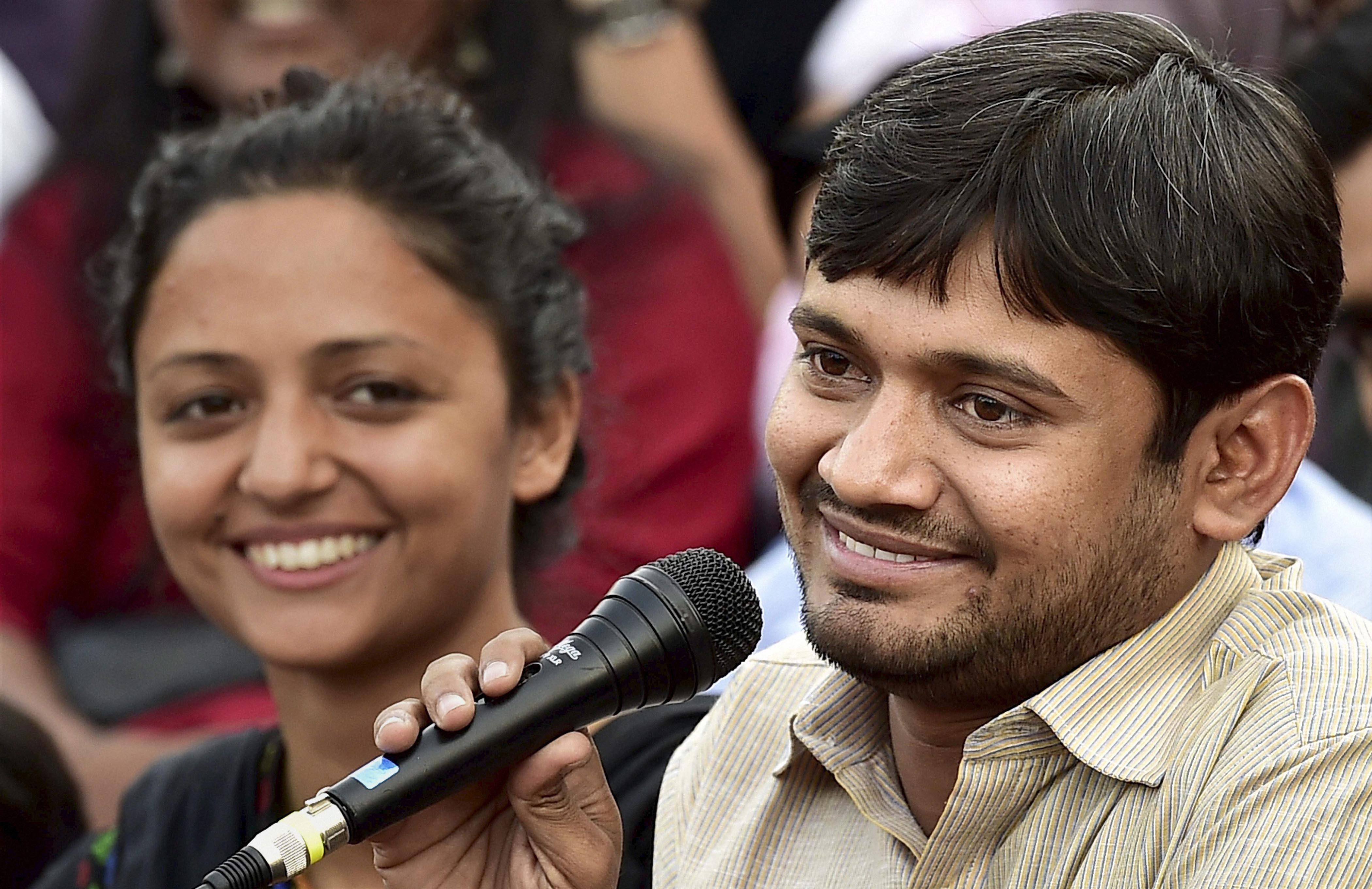
Importance of the battle of Begusarai, the former citadel of CPI

In the sweltering heat of Begusarai, under a blazing red sun, Kanhaiya Kumar usually campaigns in a flaming red shirt. Every few minutes, he underlines the symbolism of his sartorial choice with his trademark salutation delivered with a clenched fist and a raised arm: Jai Bheem, Lal Salaam.
But, the essence of Kumar’s campaign is the Bheem in his gesture. For it represents the ideals and ideas expounded by Dr Bhimrao Ambedkar, the architect of the Indian Constitution. And aptly, the election in Begusarai is turning out to be a battle for the idea of India, the freedoms and liberties guaranteed in the Constitution by Ambedkar, and the very soul of democracy.
On paper, the election in Begusarai is a fight between the BJP’s Giriraj Singh, the RJD’s Tanveer Hassan and Kumar, contesting as a Communist Party of India candidate. But, the ideas they represent are much bigger than their parties.
Singh is a symbol of a hardline, narrow mindset that is not averse to using nationalism, religion and paranoia to influence the voter. His politics, like that of the BJP, is based on creating false binaries on issues like religion and national security, and then branding everyone who doesn’t conform to their ideas and hollow definitions as anti-national, enemy of the state and a traitor who needs to be dispatched to Pakistan. The idea of India Singh represents is evident in his famous statement a few weeks ago when he advised those not attending Narendra Modi’s Patna rally to go to Pakistan.
The BJP stands for Hindutva and a country where the majority community has the first rights on everything while the minorities are marginalised or treated with disdain and suspicion. The BJP wants to impose its choices on individuals, cunningly in the name of culture, religion and rashtravad (nationalism), limit individual freedoms by craftily making them sound like necessary responsibilities of a citizen towards the country and dharma.
The BJP abhors dissent, stifles debate and practises a brand of tyranny where individuals are controlled through fear of domination by enemies of the nation and Hindutva. It believes in an idea of India where an individual is either with it and, thus, with the nation or with the enemies and, thus, a gaddar (traitor).
In an election, the BJP — and almost every other party — represents a top-down form of democracy. In this model, the people are expected to participate either by attending rallies and roadshows or by casting their vote. Everything else, from the funding of a campaign to the electoral issues, are decided by someone at the top.
The opposite ideology
Kanhaiya Kumar is the perfect antithesis of everything Singh and the BJP stand for. He argues for a secular society where individual rights and liberties get primacy over everything, where dissent and debate are indispensable components of a democracy. He abhors the role of religion in elections and calls the Constitution the Bible, Koran and Gita of India. For him, the definition of a just society is where every citizen has equal rights and equal opportunities, regardless of class, caste and community. And his idea of an election is a process where the campaign is funded, managed and planned by the crowd. It envisages their participation at every level, which is what it should be in a democracy.
The contest would have been less interesting if Kumar were just a counterpoint to the BJP, like many others in Indian politics. But Kumar is also one of the biggest victims of its politics of fake binaries and slogan-shouting brand of patriotism.
He has been vilified, attacked and victimised by the right wing and the institutions controlled by him. He has been called a traitor and there have been brutal attempts to silence his voice through the misuse of draconian laws. And, like all other vocal opponents of the BJP, he has been branded a cheerleader of the ‘tukde-tukde’ gang, on the basis of specious arguments and laughable evidence. As a result, he has become one of the most popular symbols of resistance against the saffron parivar.
An environment of jingoism
Predicting the outcome of a contest between equality, liberty, fraternity in the red corner and emotive issues like Hindutva, patriotism and muscular nationalism in the saffron corner would have been a no-brainer. But, in an environment of jingoism, imagined slights, hyped-up fears and the bogey of strong internal and external enemies, nothing can be predicted. The presence of RJD’s Tanveer Hassan — a Muslim in a constituency with large number of minority voters — has added another dimension to the contest.
Hassan represents an idea that is premised on the fear of the BJP and the concept of battling majoritarian politics by counter mobilisation of the minorities and social groups. He represents a party that is steeped in ideals of dynasty-based entitlements and politics of caste and reservation — concepts that Kumar’s own life and philosophy negate.
An election between three competing ideologies, represented by their powerful symbols is rare in India. But this year Begusarai has the privilege to choose between three ideas — the majoritarianism of Singh, the casteism and minoritism of Hassan and the idealism of Kumar.


